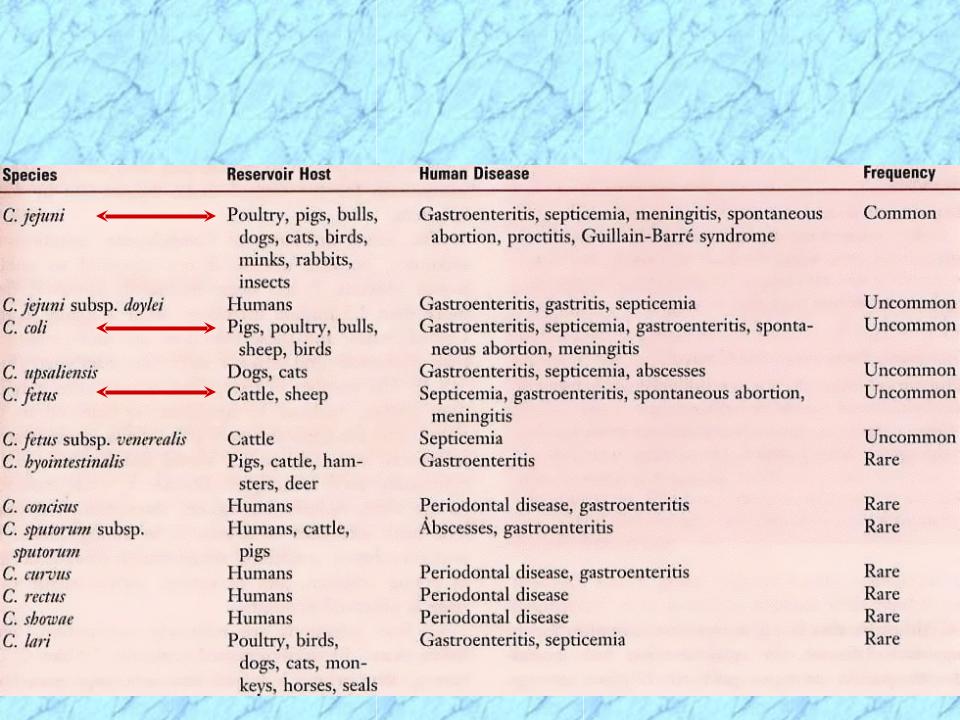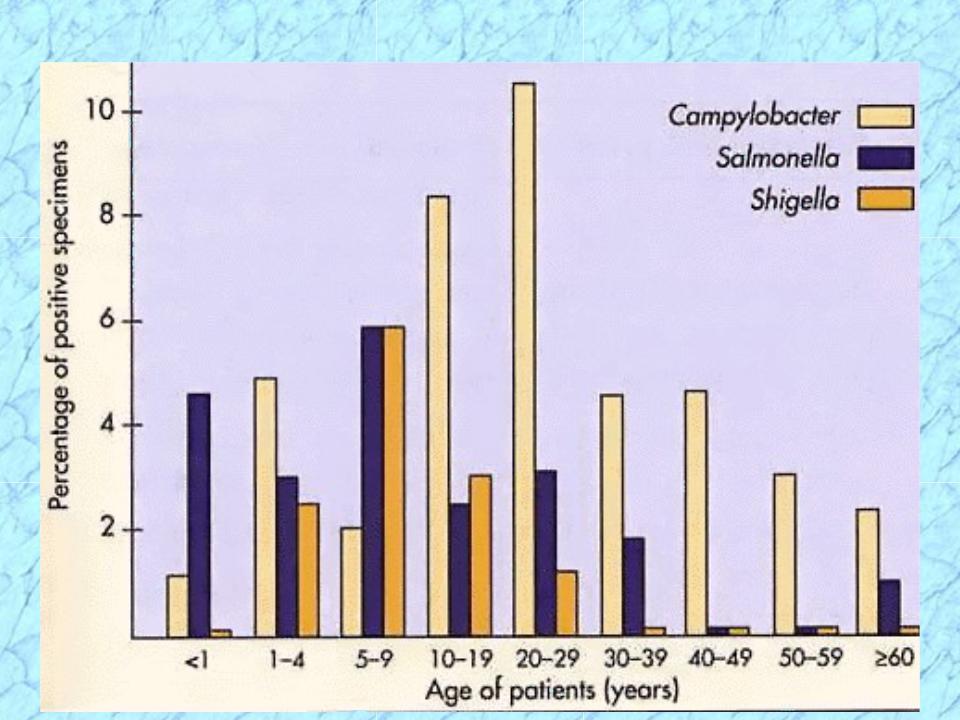
- •Campylobacter &
- •General Characteristics
- •History of Campylobacter
- •Morphology & Physiology of Campylobacter
- •Campylobacter Species Associated
- •Guillain-Barre Syndrome (GBS)
- •Epidemiology of Campylobacteriosis
- •Epidemiology of Campylobacteriosis(cont.)
- •Epidemiology of Campylobacteriosis(cont.)
- •Pathogenesis & Immunity
- •Putative Virulence Factors
- •Laboratory Identification
- •Laboratory Identification (cont.)
- •Treatment, Prevention & Control
- •History & Taxonomy of Helicobacter
- •General Characteristics of Helicobacter
- •Morphology & Physiology of
- •Helicobacter on Paramagnetic Beads
- •Helicobacter Species Associated
- •Epidemiology of Helicobacter Infections
- •Epidemiology of Helicobacter Infections (cont.)
- •Pathogenesis of Helicobacter Infections
- •Virulence Factors of Helicobacter
- •Virulence Factors of Helicobacter
- •Urea Hydrolysis
- •Virulence Factors of Helicobacter (cont.)
- •Laboratory Identification
- •Treatment, Prevention & Control
- •REVIEW
- •General Characteristics
- •Campylobacter Review
- •History of Campylobacter
- •REVIEW
- •REVIEW
- •Morphology & Physiology of Campylobacter
- •Campylobacter Species Associated
- •Guillain-Barre Syndrome (GBS)
- •Epidemiology of Campylobacteriosis
- •Epidemiology of Campylobacteriosis(cont.)
- •Epidemiology of Campylobacteriosis(cont.)
- •Helicobacter Review
- •History & Taxonomy of Helicobacter
- •General Characteristics of Helicobacter
- •REVIEW
- •REVIEW
- •Morphology & Physiology of
- •Helicobacter Species Associated
- •Epidemiology of Helicobacter Infections
- •Epidemiology of Helicobacter Infections (cont.)
- •Pathogenesis of Helicobacter Infections
- •Virulence Factors of Helicobacter
- •Treatment, Prevention & Control


Campylobacter &
Helicobacter
rRNA Superfamily VI of Class Proteobacteria

General Characteristics
Common to Superfamily
Gram-negative
Helical (spiral or curved) morphology; Tend to be pleomorphic
Characteristics that facilitate penetration and colonization of mucosal environments (e.g., motile by polar flagella; corkscrew shape)
Microaerophilic atmospheric requirements
Become coccoid when exposed to oxygen or upon prolonged culture
Neither ferment nor oxidize carbohydrates

History of Campylobacter
First isolated as Vibrio fetus in 1909 from spontaneous abortions in livestock
Campylobacter enteritis was not recognized until the mid-1970s when selective isolation media were developed for culturing campylobacters from human feces
Most common form of acute infectious diarrhea in developed countries; Higher incidence than Salmonella & Shigella combined
In the U.S., >2 million cases annually, an annual incidence close to the 1.1% observed in the United Kingdom; Estimated 200-700 deaths

Morphology & Physiology of Campylobacter
Small, thin (0.2 - 0.5 um X 0.5 - 5.0 um), helical (spiral or curved) cells with typical gram-negative cell wall; “Gull-winged” appearance
•Tendency to form coccoid & elongated forms on prolonged culture or when exposed to O2
Distinctive rapid darting motility
•Long sheathed polar flagellum at one (polar) or both (bipolar) ends of the cell
•Motility slows quickly in wet mount preparation
Microaerophilic & capnophilic 5%O2,10%CO2,85%N2
Thermophilic (42-43C) (except C. fetus)
•Body temperature of natural avian reservoir
May become nonculturable in nature

Campylobacter Species Associated
with Human Disease

Guillain-Barre Syndrome (GBS)
Low incidence potential sequela
Reactive, self-limited, autoimmune disease
Campylobacter jejuni most frequent antecedent pathogen
Immune response to specific O-antigens cross- reacts with ganglioside surface components of peripheral nerves (molecular or antigenic mimicry)
•Acute inflammatory demyelinating neuropathy (85% of cases) from cross reaction with
Schwann-cells or myelin
•Acute axonal forms of GBS (15% of cases) from molecular mimicry of axonal membrane

Epidemiology of Campylobacteriosis
Zoonotic infections in many animals particularly avian (bird) reservoirs
Spontaneous abortions in cattle, sheep, and swine, but generally asymptomatic carriage in animal reservoir
Humans acquire via ingestion of contaminated food (particularly poultry), unpasteurized milk, or improperly treated water
Infectious dose is reduced by foods that neutralize gastric acidity, e.g., milk. Fecal-oral transmission also occurs

Epidemiology of Campylobacteriosis(cont.)
Contaminated poultry accounts for more than half of the camylobacteriosis cases in developed countries but different epidemiological picture in developing countries
In U.S. and developed countries: Peak incidence in children below one year of age and young adults (15-24 years old)
In developing countries where campylobacters are hyperendemic: Symptomatic disease occurs in young children and persistent, asymptomatic carriage in adults

Epidemiology of Campylobacteriosis(cont.)
Sporadic infections in humans far outnumber those affected in point-source outbreaks
Sporadic cases peak in the summer in temperate climates with a secondary peak in the late fall seen in the U.S.
Globally, C. jejuni subsp. jejuni accounts for more than 80% of all Campylobacter enteriti
C. coli accounts for only 2-5% of the total cases in the U.S.; C. coli accounts for a higher percentage of cases in developing countries

